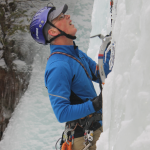- This topic has 3 replies, 2 voices, and was last updated 8 years, 2 months ago by
 Huitaek Yun.
Huitaek Yun.
-
AuthorPosts
-
-
October 10, 2017 at 9:15 am #45080
 Huitaek YunParticipant
Huitaek YunParticipantI am working on Long Period Fiber Grating (LPFG) simulation using OptiGrating.
I have several questions:1. My fiber/waveguide parameter is set to core-cladding-air. But the transmittivity changes drastically when I change the width of air. Which width of air should I submit for LPFG exposed to air?
2. What is ‘step’ in fiber/waveguide parameter window?
2. When I select LP(0,1) and LP(0,2) together, the transmittivity shows two graphs in a single plot. But when I select multiple LP modes, it shows one plot. I don’t understand why. Also I don’t catch the physcial meaning of combining various LP modes.
-
October 11, 2017 at 11:17 am #45108
 Steve DodsParticipant
Steve DodsParticipantGood questions. In the air the optical wave will depend exponentially on the radius, as \gamma . The coefficient in the exponent depends on the modal index according to the attached equation.
If the width of the air layer is several times the distance \gamma , the results should be insensitive to the width of that layer. I don’t see results changing with that width in the samples I use.
2) ‘step’ in the fiber/waveguide parameter window is used in the case the layer is not constant. The layers (e.g. core, clad …) can be functions like linear, parabolic… and so on. If they are not constant, the simulator must approximate them with a sequence of thin constant layers. “Steps” specifies how many such layers should be used.
3) When LP(0,1) and LP(0,2) are selected, there will be two reflection spectra and two transmission spectra, one for each mode. This is practical to plot in one graph. If more are selected, it becomes too difficult to plot all of them, so in this case OptiGrating will plot only the transmission of the incident mode, since it is presumed that is the only spectrum of real interest. The selection of modes in the calculation of the spectrum is meant to specify which modes are expected to participate in the propagation. There are often hundreds of cladding modes. If all were calculated and included in the calculation OptiGrating simulations would be very slow. On the other hand, the user is expected to know which modes are going to be significant. Making the right choice in the selection makes the simulation both fast and accurate.
-
October 11, 2017 at 11:19 am #45109
 Steve DodsParticipant
Steve DodsParticipantattach.
-
October 25, 2017 at 8:23 pm #45276
 Huitaek YunParticipant
Huitaek YunParticipantThank you for the answer!
-
-
AuthorPosts
- You must be logged in to reply to this topic.

